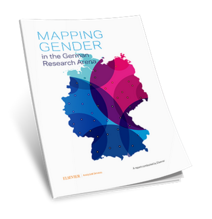Scopus 2015 Review, Part 3: A rise in the number of data partnerships
As 2015 comes to an end, it’s time to reflect upon the year and look at how Scopus has, and will continue to, evolve. Over 3 posts, we share key 2015 Scopus developments and their impact on the researcher. Each post covers a different focus.
Part one focused on Scopus content growth and quality and part 2 looked at product developments changing the way you can find, use and evaluate content. This third post focuses on the continuing trend in growth of data partnerships throughout 2015. While data partnerships may not directly impact everyday use of Scopus, the trend is a noteworthy 2015 highlight. Here is why:
Scopus data underpins important ranking reports. Not unrelated to the progress Scopus has made in content expansion (while still maintaining quality) and in measuring research impact, this year also saw a growing trend in the number of ranking organizations turning to Scopus as their data provider. Why? As explained by Times Higher Education (THE) Managing Director, Trevor Barratt:
“[Scopus] allow[s] us to analyze a deeper range of research activity from a wider range of institutions than at present, including those institutions from emerging economies that account for a growing portion of the world’s research output and which have shown a great hunger for THE’s trusted global performance metrics.”
-Trevor Barratt, Times Higher Education (THE) Managing Director
Along with THE and the US News & World report (Arab Region Ranking), additional organizations partnered, or renewed their partnership with Elsevier this year, choosing to use Scopus data to underpin their rankings and reports.This list includes:
- QS Quacquarelli Symonds renewed their agreement to use Scopus data
- Maclean’s Magazine
- ShanghaiRanking Consultancy (SRC) for the 2015 Best Chinese University Ranking
In addition to being a data source behind ranking organizations, Scopus data is also used by Elsevier Research Intelligence to build specialized reports and assessments commissioned by institutions, funders and policy-makers worldwide. This year, those reports included:
- Mapping Gender in the German Research Arena
- Sustainability Science in a Global Landscape
- A Review of the UK's Interdisciplinary Research using a Citation-based Approach
- America's Knowledge Economy: A State-by-State Review
- Research Performance in South-East Asia
- Mapping research and Innovation: Understanding Amsterdam's Competitive Advantage
Click here to learn more about the Elsevier Research Intelligence research initiatives
Why does this matter to the researcher? It speaks to the global depth and breadth of Scopus content, in addition to the accuracy and completeness of its data; and the analytical capabilities it shares with SciVal.
In conclusion, in 2015 Scopus added significant depth to its content, established procedures to further ensure and monitor the quality of its content, launched a new article-level metrics module to give more insight into research impact, added ways to find open access content and continued a growing trend in becoming the data provider behind important reports and rankings. Wonder what 2016 will bring? Keep apprised of all things Scopus with our monthly newsletter. Subscribe here.
Missed, parts 1 or 2? Find them here:
- Part 1: More content, but not at the expense of quality
- Part 2: New tools to help find, use and evaluate content
We also invite you to attend the first 2016 Scopus webinar coming in January, which will include a complete overview of Scopus. Go here to view the webinar schedule and register.



